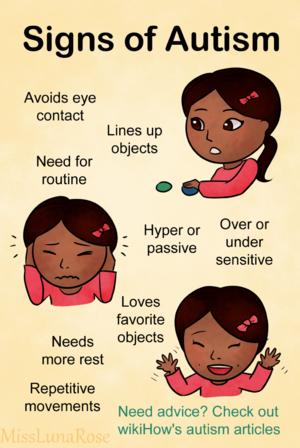Types Of Autism Range Disorder
:max_bytes(150000):strip_icc()/Age-inappropriate-interests-and-behaviors-in-autism-5190904_final_03-7a4a9a9ffb8048438bc2eba97558f579.jpg)
- Get going with Pennsylvania's highest-rated group of specialized, specialist, and recognized on the internet specialists that can support you with a large range of concerns, including anxiety, depression, stress and anxiety, despair, injury, and much more.Right here are some points to understand about this problem and some ways you can help your kid.Level 2 Autism is in the middle of the range as it relates to the degree of support an individual can take advantage of to work more separately and effectively in daily life.Our app provides personalized techniques, expert support, and a supportive area, all designed to encourage you in promoting your youngster's development.Yes, Degree 3 autism is thought about a handicap as a result of the considerable effect it has on every day life.First, the techniques rely on the schedule and completeness of existing information and records to identify ASD situations and various other indications.
Our skilled team will certainly collaborate with you and your enjoyed one to develop an individualized therapy plan customized to their distinct needs and objectives. CDD differs from various other kinds of ASD in regards to its late start of signs and the significant loss of previously acquired abilities. ASD is a developmental Autism Spectrum Quotient (AQ) problem that affects social communication, communication abilities, and behavior. Autism is a range problem, indicating that it manifests in a different way in each individual. The overview for autistic people varies greatly depending upon their specific needs and the support they obtain. Early medical diagnosis and individualized interventions are crucial for making the most of potential and lifestyle throughout all degrees of autism.
An Understanding Into The Various Sorts Of Autism Range Condition

Recognizing Very Early Signs Of Autism In Children
People detected with Level 2 autism face much more noticable challenges with social communication and behavioral adaptability than those with Degree 1. Nevertheless, the DSM-- 5 currently lists three different degrees of ASD, which physicians establish according for support an individual requires. The autism spectrum refers to the selection of potential differences, abilities, and levels of capacity that are present in autistic people. " Each kind of Autism shows a degree of problem that a client confronts with verbal, social and communicative communications. As Autism and Relationships our understanding of autism expanded, so did the demand for a standard classification system.
How The Spell Autism Framework Aids Individuals With Autism Thrive
Those identified with Asperger's often excel in specific locations such as mathematics or songs however locate social communications challenging. They may have problem understanding mockery or figurative language, resulting in misunderstandings in discussions. Unlike those with Autistic Disorder, individuals with Asperger's generally do not have significant language hold-ups; however, they might display unusual speech patterns or tone. It's essential to bear in mind that autism is a spectrum; individuals might experience characteristics throughout various levels or rise and fall in time. Think of these degrees as a starting factor for comprehending the diverse ways autism emerges.
The autism level they are identified at is based on the intensity of their symptoms and mainly based on how much assistance they need in their daily life. Autism spectrum condition (ASD) can be undiagnosed or misdiagnosed in people who may not have actually displayed obvious symptoms or had accessibility to proper analysis and medical diagnosis in their earlier years. Seeking a professional evaluation can supply grownups with a much better understanding of their distinct neurodevelopmental profile. This late onset of symptoms differentiates CDD from various other sorts of autism, where signs are commonly present from very early childhood years.
However, the launch of the DSM-5 in 2013 brought significant adjustments to autism classification. The different subtypes were combined right into a solitary diagnosis of Autism Spectrum Condition. This shift reflected the growing recognition that autism exists on a continuum, with varying levels of intensity and discussion. While the problem itself is not new, our recognition and category of it have advanced significantly gradually. If you want to discover more regarding autism or have actually discovered prospective check in your child, call the caring experts at Honesty today. We can offer you with additional guidance or support and introduce you to the appropriate early treatment programs for your child.Asperger's Disorder is a developmental problem that was formerly recognized as a separate disorder from autism. With the magazine of the DSM-V, Asperger's was reclassified into a broader category of ASD, along with several various other developing conditions. Because of Asperger's lengthy history as a different problem from autism, specialists will occasionally detect children with Asperger's to symbolize a subtype of less-severe ASD.
The background of autism category has actually undertaken significant changes since its first summary by Leo Kanner in 1943. Initially, autism was considered an unusual problem, often misinterpreted and misdiagnosed. Over the years, our understanding of autism has grown, leading to even more comprehensive analysis requirements and a wider acknowledgment of the spectrum nature of the condition. Each of these categories demonstrates varying degrees of difficulties an individual faces with social, spoken, communicative and recurring behaviors.